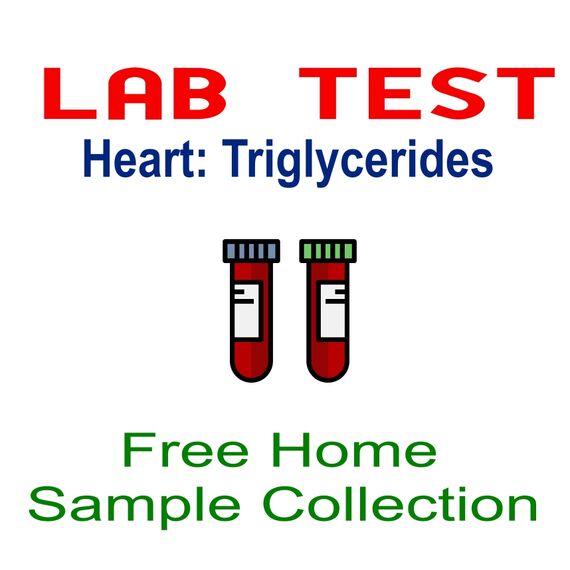This test is aslo known as TG Test, TRIG Test.
As part of a lipid panel, a triglycerides test may be used to monitor people who have risk factors for heart disease, those who have had a heart attack, or those who are being treated for high lipid and/or high triglycerides levels.
Triglycerides should be assessed as part of any lipid testing for diabetics because they dramatically rise when blood glucose levels are not well-controlled.
Mostly triglycerides are found in fat (adipose) tissue, but some triglycerides circulate in the blood to provide fuel for muscles to work. After a person eats, an increased level of triglycerides is found in the blood as the body converts the energy not needed right away into fat.
Triglycerides move via the blood from the gut to adipose tissue for storage. In between meals, triglycerides are released from fat tissue to be used as an energy source for the body. Most triglycerides are carried in the blood by lipoproteins called very low-density lipoproteins (VLDL).
High levels of triglycerides in the blood are associated with an increased risk of developing cardiovascular disease (CVD), although the reason for this is not well understood. Certain factors can contribute to high triglycerides levels and to an increased risk of CVD, including lack of exercise, being overweight, smoking cigarettes, consuming excess alcohol, and having medical conditions such as diabetes and kidney disease.
For healthy adults, a lipid panel, which includes triglycerides, is suggested every 4 to 6 years to assess the risk of heart disease. Between the ages of 9 and 11, as well as between 17 and 21, children should receive at least one lipid profile screening.
When your heart disease risk factors are recognized, then further tests may be needed.
Triglycerides test is evaluated as part of any lipid testing for diabetics as they badly rise if blood glucose levels are not strictly contolled.
For all adults, testing is possibly ordered on regular basis when heart disease risk factors are recognized. A few of risk elements are as below:
- Cigarette smoking
- Overweight or fatter
- Poor diet or malnutrition
- Sluggish or lack of activity
- Age factor i.e., above 45 years
- Either high BP or Medication for BP
- Family history of CVD
- Had a heart attack or pre-existing CVD
- Diabetes or prediabetes
- For diabetics, it is especially important to have triglycerides measured as part of any lipid testing since triglycerides increase significantly when blood glucose levels are not strictly controlled.
For children above 2 yrs & young adults, the screening of high cholesterol as part of a lipid panel is advised. A few of risk elements are as below:
- Overweight or fatter
- Poor diet or malnutrition
- Family history of CVD
In fact all other risk factors can be compared with that of adults risk elememts.
As a component of lipid panel, triglycerides tests may be ordered at regular intervals to evaluate the success of lipid-lowering lifestyle changes, like diet & exercise, or to evaluate the effectiveness of drug remedy for instance as statins.

Patient should fast for 8-12 hours prior to sample collection. In addition, alcohol should not be consumed for 24 hours just before the test.
None
24 hours or 2 dayds from the date of sampe collection
Type the specimeny type like blood, urine or any other specimen required.
Sample report in a format
No reviews found


